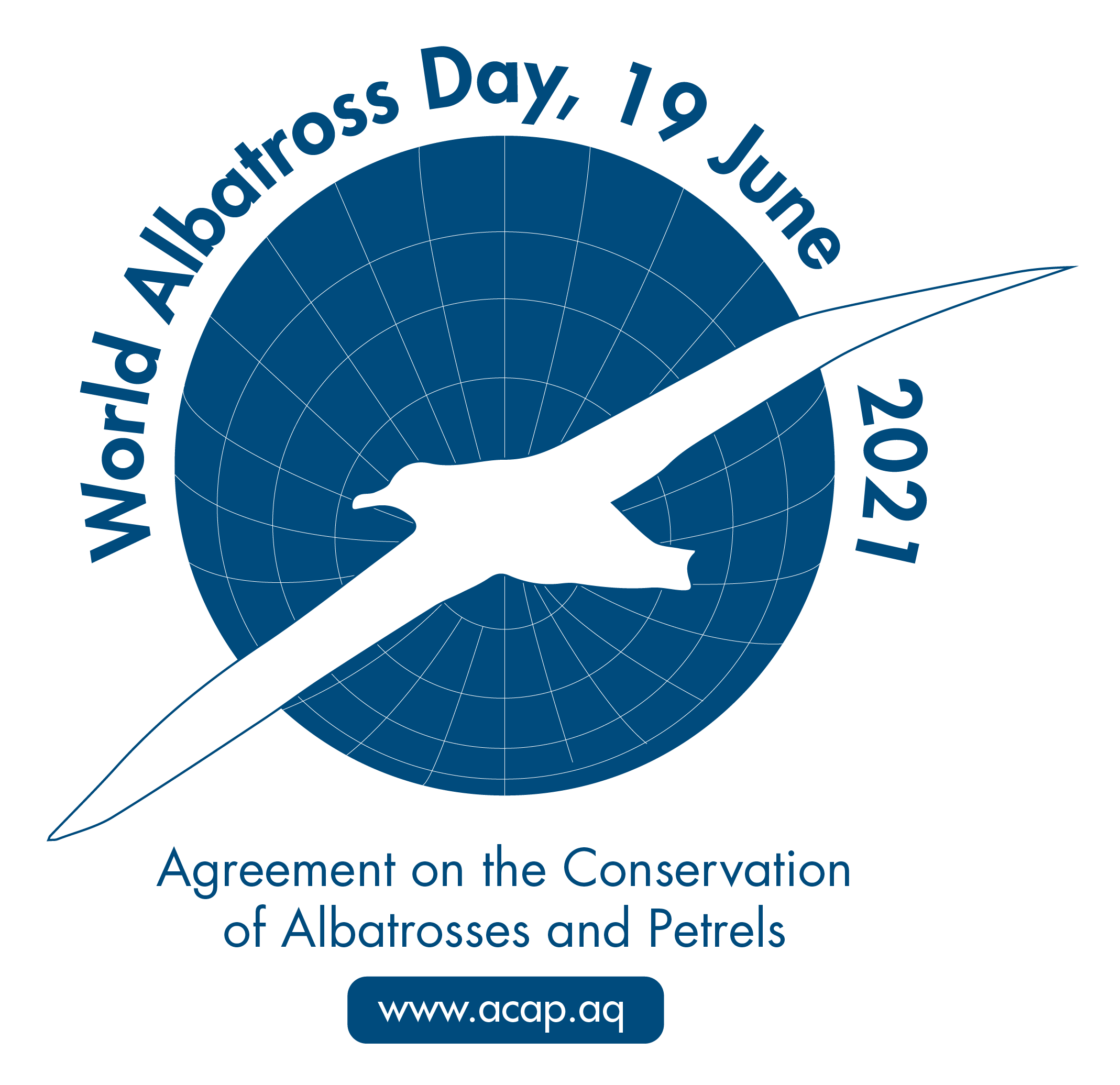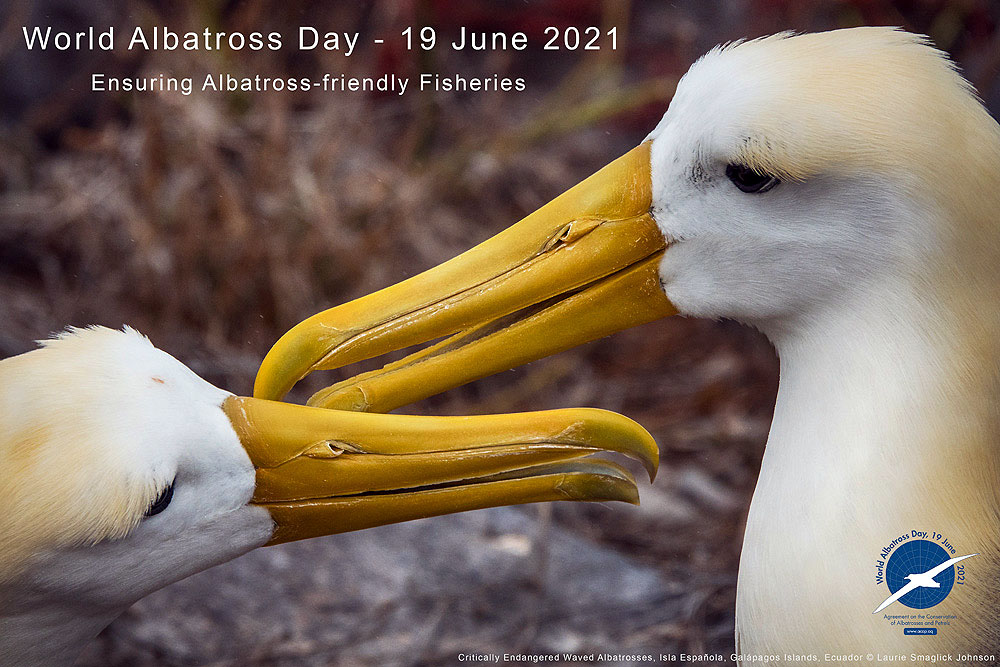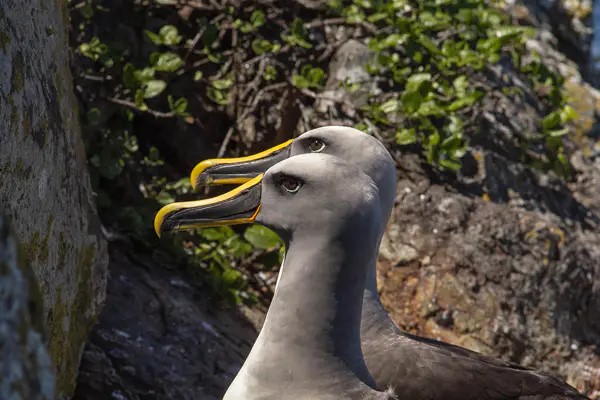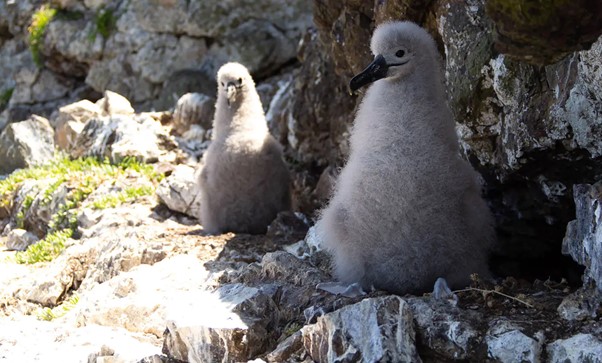
Rosemary Rock, photograph by Jennifer Carol
Rosemary Rock is a small islet (0.9 ha; 170 x 40 m; 50 m high) with steep cliffs in the Princes Chain of the Manawatāwhi/Three Kings Islands group, situated 57 km north of New Zealand’s North Island.

Buller's Albatrosses on Rosemary Rock, photograph by Kevin Parker
The partially vegetated basalt islet, the smallest in the chain, supports a population of some 15-35 pairs of the globally Near Threatened and nationally Naturally Uncommon Buller’s Albatross Thalassarche bulleri first discovered on the islet in 1983. During the most recent visit in May 2020 blood samples were collected from three adults to determine the birds’ taxonomic status; results are awaited to confirm whether New Zealand’s northernmost breeding albatrosses are, as suspected, of the Northern subspecies T. b. platei. At the time there were only six occupied nests, containing four live and two dead chicks, possibly a consequence of high temperatures in the 2019/20 breeding season causing nest failures. Red-billed Gulls Chroicocephalus novaehollandiae scopulinus also breed on the rock.

Buller's Albatross chicks on Rosemary Rock, photograph by Kevin Parker
The uninhabited Manawatāwhi/Three Kings Islands with a total land area of 6.85 km² are managed by the local iwi (Māori tribe) Ngāti Kuri and the New Zealand Department of Conservation as a nature reserve. Rosemary Rock is free of introduced mammals, including rodents. Given that landing is difficult even in calm seas it seems the islet requires no additional protection.
Read an earlier ACAP Latest News post post on Rosemary Rock.
With thanks to Kevin Parker and Matt Rayner.
References:
Frost, P. 2017. Sooty Tern: Three Kings Islands. BirdingNZ.net.
Frost, P.G.H., Fitzgerald, N., Robinson, R. & Hamilton, O. 2018. Buller’s mollymawk (Thalassarche bulleri) on Rosemary Rock, Three Kings Islands, New Zealand. Notornis 65: 164-167.
McCallum, J., Brook, F. & Francis, M. 1985. Buller's Mollymawks on Rosemary Rock, Three Kings Islands, in 1985. Notornis 32: 257-259.
Powlesland, R. 1990. Report on a visit to Great Island, of the Three Kings, 25 February – 6 March 1989. Science and Research Internal Report No, 72 No, 72. Wellington.: Department of Conservation. 20 pp.
Rayner, M. 2020. Blog. The mystery of Manawatāwhi mollymawks: a history and field report. Auckland Museum, 7 May 2020.
Rayner, M.J., Parker, K.A., Neho, T. & Hvid, T. 2020. Buller’s mollymawk (Thalassarche bulleri platei) count at Rosemary Rock, Manawatāwhi (Three Kings Islands). Notornis 67: 580-582.
Wright, A.E. 1984. Buller's Mollymawks breeding at the Three Kings Islands. Notornis 31: 203-207.
John Cooper, ACAP Information Officer, 13 January 2021

 English
English  Français
Français  Español
Español 







